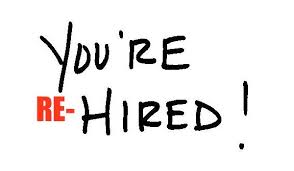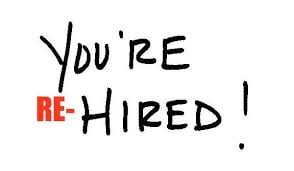The evolving dynamics of the real estate market, influenced by changing work patterns and return-to-office policies, present a significant shift in homeowner preferences and market trends. This article delves into the experiences and decisions of individuals who are adjusting their living arrangements to align with the new normal of work-life balance.
In the case of Donna Rutter, a seasoned CPA with a 30-year career, the transition is evident. Rutter, who has spent the majority of her career in Dallas and Fort Worth, enjoyed a work style with considerable flexibility even before the pandemic. This flexibility allowed her to reside in her dream home in Rocky Creek Ranch, located approximately 20 minutes from downtown Fort Worth. However, the onset of the pandemic necessitated a shift to a fully remote work arrangement.
The gradual waning of the pandemic and the growing emphasis on in-office presence have prompted Rutter to rethink her living situation. In 2021, with the acquisition of her own accounting firm, Rutter found herself drawn back to the office, acknowledging the preference of her clients for in-person interactions. This shift in work dynamics, coupled with a lengthy commute from her home to her office near central Fort Worth, has led her to put her approximately 11-acre ranchette on the market, with a listing price of $1.75 million.
Rutter's story mirrors a broader trend observed in the real estate market. According to a Redfin report from September, approximately 10% of U.S. home sellers are relocating due to return-to-work policies. This statistic signifies a notable shift from the dominant remote-work policies that influenced housing market behavior for over three years. Kastle Systems, a security services provider, reported that average office attendance in major U.S. cities was around 50.5% of the pre-pandemic level, illustrating the gradual resurgence of in-person work.
Further insights from Redfin's survey, which encompassed over 600 potential sellers, highlight the influence of major corporations in shaping this trend. Companies like Apple, Walt Disney, Google, and Tesla have been instrumental in recalling remote employees back to office settings. This corporate stance is reshaping the housing preferences of employees, as evidenced by the experience of a Google employee who, facing a two-hour commute, is actively seeking housing closer to the city.
The implications of these shifts are also felt in the housing market dynamics of specific regions. In Austin, for example, the call by Elon Musk for Tesla employees to return to office-based work has spurred a surge in housing demand in the city. However, the challenge of finding affordable housing in Austin has led some employees to consider neighboring markets like San Antonio and Killeen, where housing is more economical. Despite a decrease in the median sale price in Austin, the demand remains a positive influence on the housing market, counterbalancing the impact of rising interest rates.
The sentiment among those relocating for work is varied, with some Gap employees embracing the change while others express reservations. Rutter, for instance, is making a significant adjustment, moving to a smaller home closer to her office. Despite the downsizing, she expresses enthusiasm for the change and the benefits of a shorter commute.
The real estate market's responsiveness to shifts in work patterns underscores the interconnectedness of professional and personal life choices. As companies continue to redefine their work policies in the post-pandemic era, the impact on housing preferences and market trends is likely to evolve further, reflecting the ongoing adaptation to new ways of working and living.
Featured Video
Articles you may find interesting:
- Corporate Employees: 8 Factors When Choosing a Mutual Fund
- Use of Escrow Accounts: Divorce
- Medicare Open Enrollment for Corporate Employees: Cost Changes in 2024!
- Stages of Retirement for Corporate Employees
- 7 Things to Consider Before Leaving Your Company
- How Are Workers Impacted by Inflation & Rising Interest Rates?
- Lump-Sum vs Annuity and Rising Interest Rates
- Internal Revenue Code Section 409A (Governing Nonqualified Deferred Compensation Plans)
- Corporate Employees: Do NOT Believe These 6 Retirement Myths!
- 401K, Social Security, Pension – How to Maximize Your Options
- Have You Looked at Your 401(k) Plan Recently?
- 11 Questions You Should Ask Yourself When Planning for Retirement
- Corporate Employees: 8 Factors When Choosing a Mutual Fund
- Use of Escrow Accounts: Divorce
- Medicare Open Enrollment for Corporate Employees: Cost Changes in 2024!
- Stages of Retirement for Corporate Employees
- 7 Things to Consider Before Leaving Your Company
- How Are Workers Impacted by Inflation & Rising Interest Rates?
- Lump-Sum vs Annuity and Rising Interest Rates
- Internal Revenue Code Section 409A (Governing Nonqualified Deferred Compensation Plans)
- Corporate Employees: Do NOT Believe These 6 Retirement Myths!
- 401K, Social Security, Pension – How to Maximize Your Options
- Have You Looked at Your 401(k) Plan Recently?
- 11 Questions You Should Ask Yourself When Planning for Retirement
For Gap workers around the age of 60, particularly those nearing retirement or already retired, the return-to-work trend may present unique opportunities for consulting or part-time roles. A report by AARP, published in February 2023, indicates that companies are increasingly seeking the expertise of seasoned professionals, particularly in advisory or mentorship capacities. This trend is driven by the need to bridge knowledge gaps and leverage the extensive experience of senior professionals. For those in this age group, such roles can offer a balance between professional engagement and the flexibility often sought during the retirement years, while also providing additional income and a sense of purpose.
The return-to-work movement in the post-pandemic era can be likened to a tide that retreats to reveal a reshaped shoreline. Just as the ocean's retreat redefines the contours of the beach, the shift from remote to office-based work is reshaping the real estate market and lifestyle choices. For those in their senior years, much like experienced sailors who have navigated many seas, this change presents an opportunity to adjust their sails. They are now repositioning their homes closer to work or embracing flexible roles that blend their vast experience with the new work environment, much like a sailor adjusting to the changing wind and tides.
What is Gap's 401(k) plan?
Gap's 401(k) plan is a retirement savings plan that allows employees to save for their future by contributing a portion of their paycheck before taxes are taken out.
How does Gap match employee contributions to the 401(k) plan?
Gap offers a company match on employee contributions to the 401(k) plan, typically matching a percentage of the employee's contributions up to a certain limit.
What are the eligibility requirements for Gap's 401(k) plan?
Employees at Gap are generally eligible to participate in the 401(k) plan after completing a specified period of service, usually within the first year of employment.
Can Gap employees change their contribution rates to the 401(k) plan?
Yes, Gap employees can change their contribution rates to the 401(k) plan at any time, allowing them to adjust their savings based on their financial situation.
What investment options are available in Gap's 401(k) plan?
Gap's 401(k) plan offers a variety of investment options, including mutual funds, stocks, and bonds, allowing employees to choose investments that align with their retirement goals.
Does Gap provide financial education regarding the 401(k) plan?
Yes, Gap provides resources and financial education to help employees understand their 401(k) options and make informed decisions about their retirement savings.
How can Gap employees enroll in the 401(k) plan?
Gap employees can enroll in the 401(k) plan through the company’s HR portal or by contacting the HR department for assistance with the enrollment process.
What happens to my 401(k) plan if I leave Gap?
If you leave Gap, you have several options for your 401(k) plan, including rolling it over to an individual retirement account (IRA) or another employer’s plan, or cashing it out.
Are there any fees associated with Gap's 401(k) plan?
Yes, like many 401(k) plans, Gap's 401(k) plan may have administrative fees and investment-related fees, which are disclosed in the plan documents.
How often can Gap employees change their investment allocations in the 401(k) plan?
Gap employees can change their investment allocations in the 401(k) plan at any time, allowing them to respond to market conditions or personal financial changes.
/General/General%206.png?width=1280&height=853&name=General%206.png)



-2.png?width=300&height=200&name=office-builing-main-lobby%20(52)-2.png)











-2.png)








